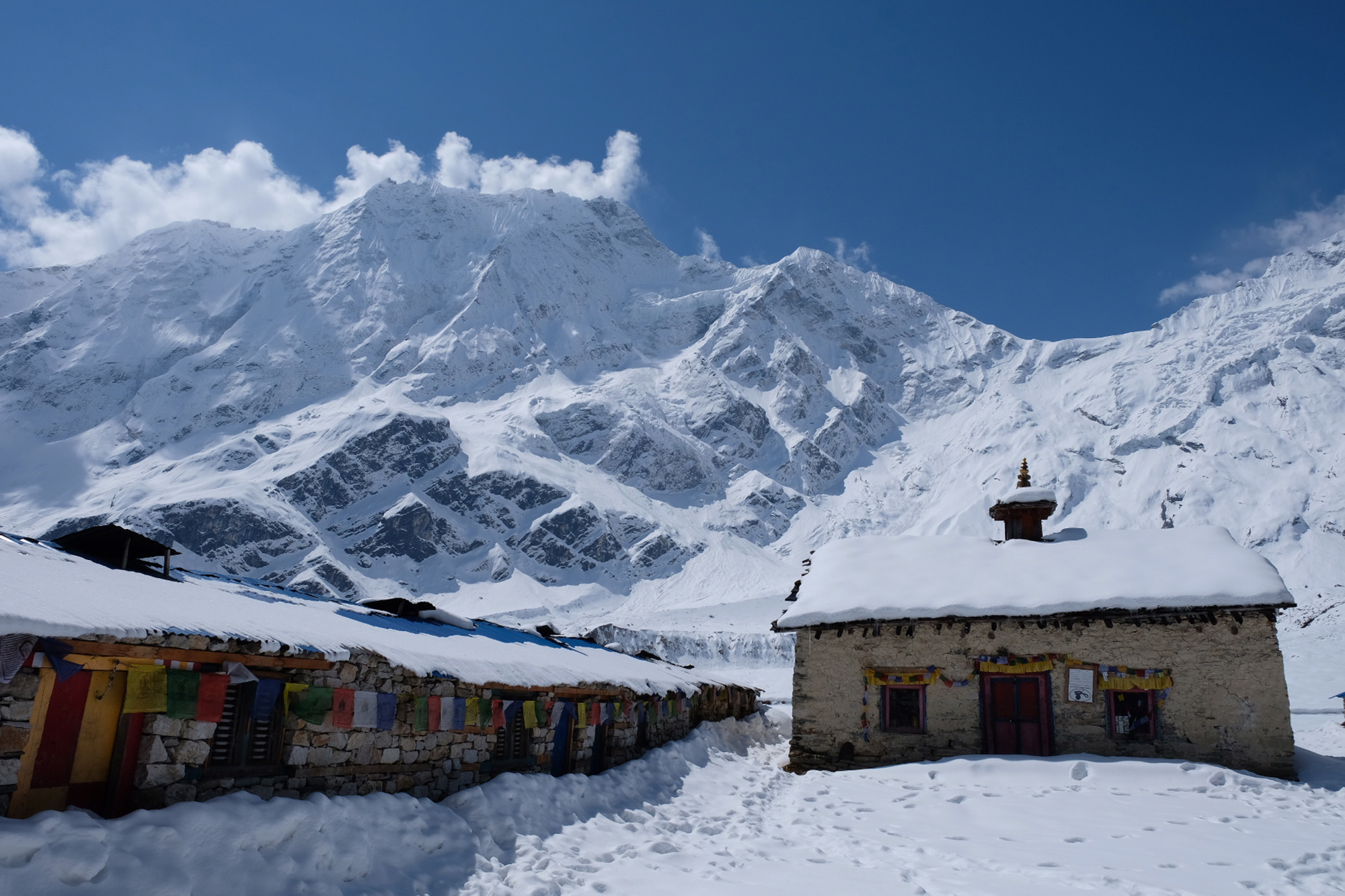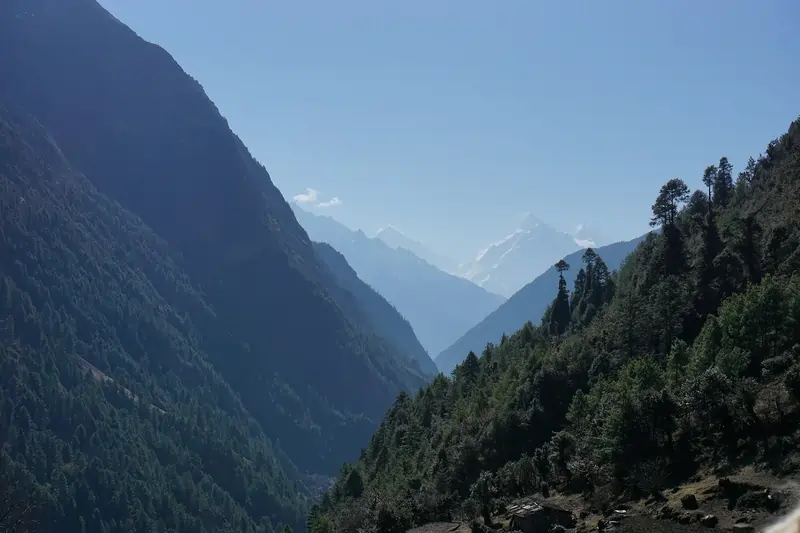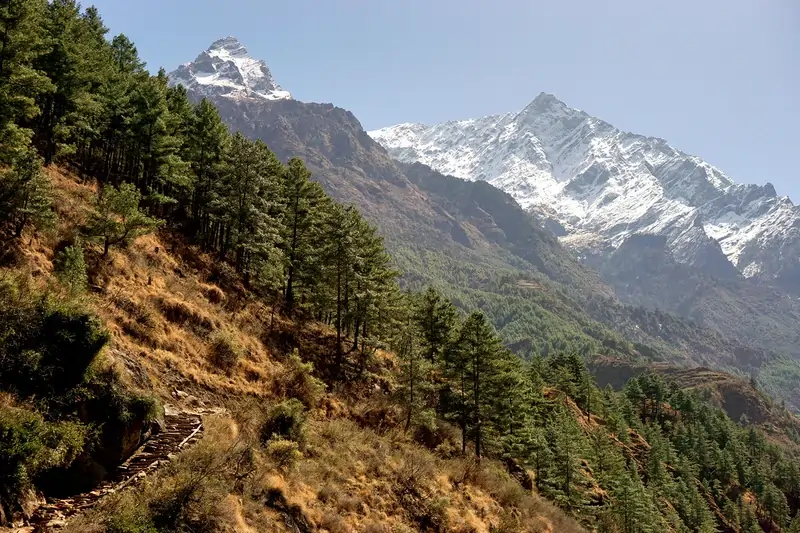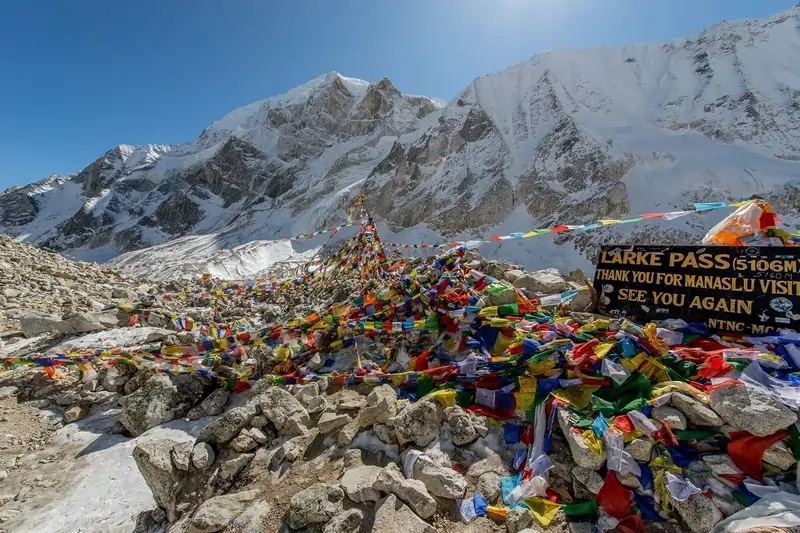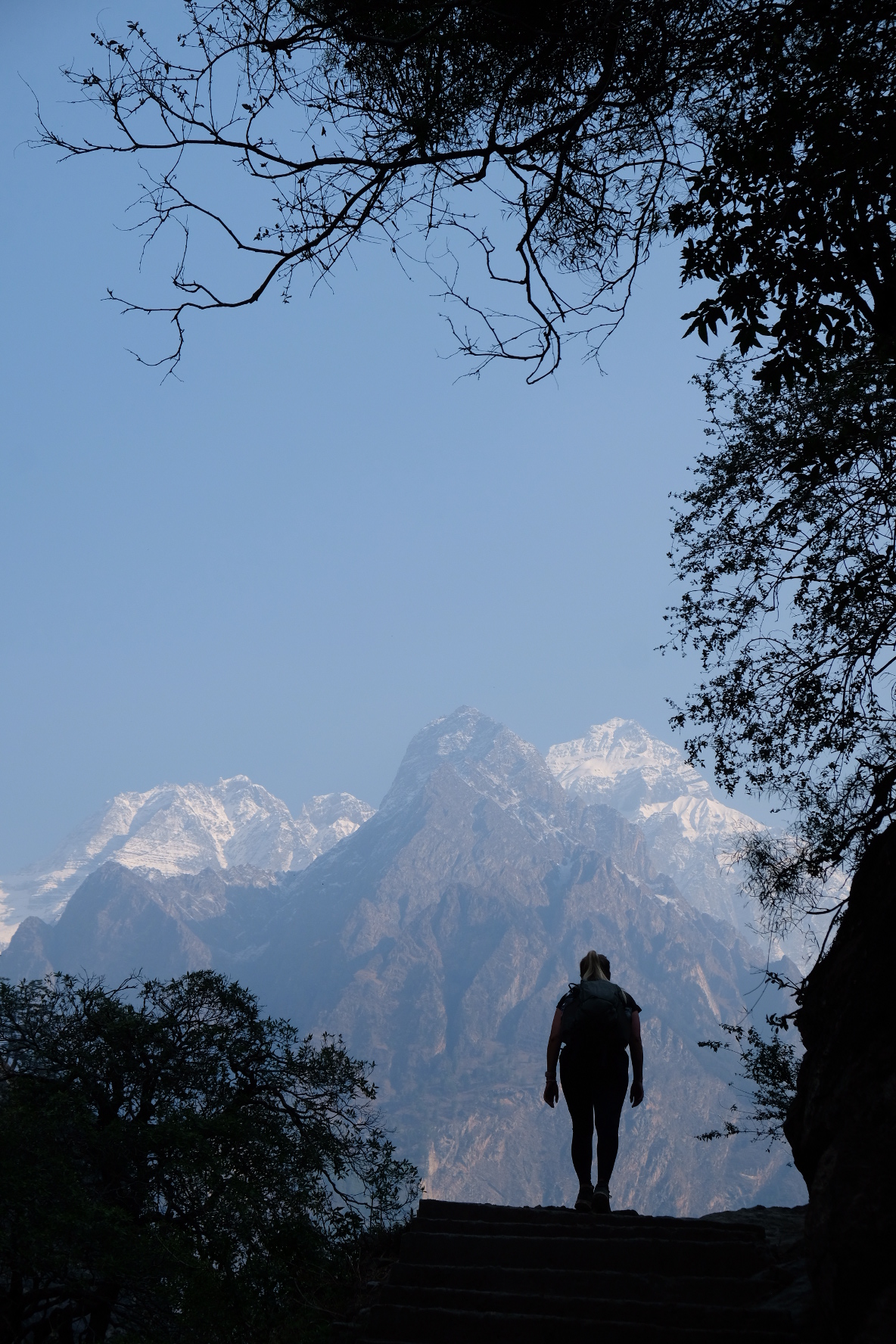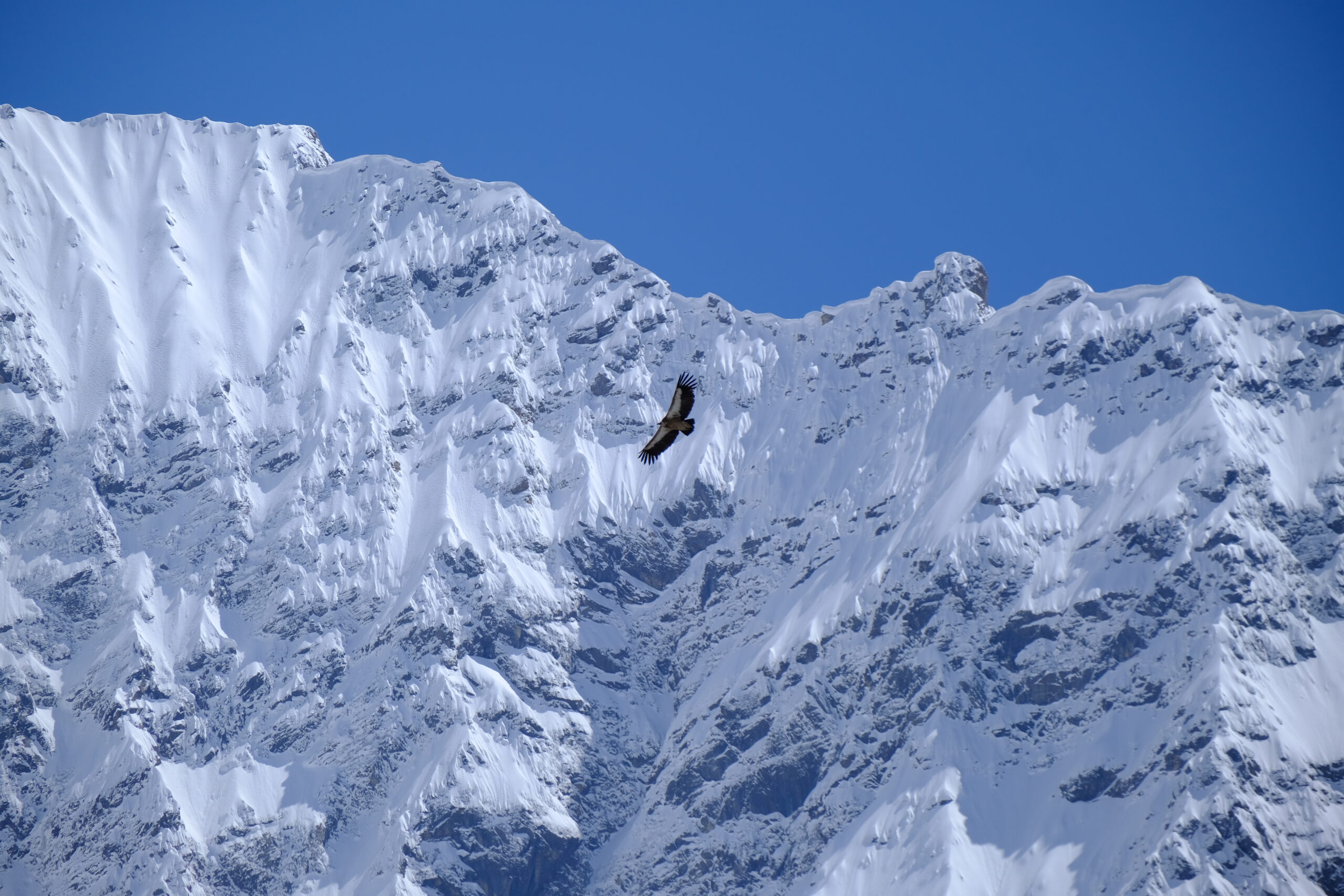Overview
The Mysterious Manaslu Trek is an awe-inspiring adventure nestled in the breathtaking landscapes of Mid-west Nepal. This hidden gem offers a unique and enchanting experience for adventurers seeking an adventure mixed with culture and nature. With towering Himalayan peaks, deep valleys, and waterfalls, the trail winds through remote villages inhabited by warm-hearted locals, providing a glimpse into their ancient traditions and cultures.
The journey presents challenging yet rewarding terrain, with stunning views of the majestic Mt. Manaslu, the eighth highest mountain in the world. As you traverse the mystical Manaslu Circuit, prepare to be captivated by its rugged charm, serene wilderness, and the sense of discovery that lingers in every step.
Trip Highlights
- Trek through traditional and rural villages of Soti Khola, Deng, Namrung, and Samagoan
- Witness ancient Buddhist monasteries like Mu Gompa to understand more about the Buddhist religion
- Experience stunning views of the Manaslu mountain range, including the grand Mt. Manaslu
- Cross the challenging Larke Pass, which offers panoramic views of numerous peaks, including Annapurna II and Mt. Ganesh
- Enjoy breathtaking views of surrounding Himalayas, including Mt. Ganesh, Mt. Himchuli, and the Annapurna range
- Experience different landscapes, from lush green forests to pasture lands to barren, rocky terrains, a true testament to nature's beauty
Trip Itinerary
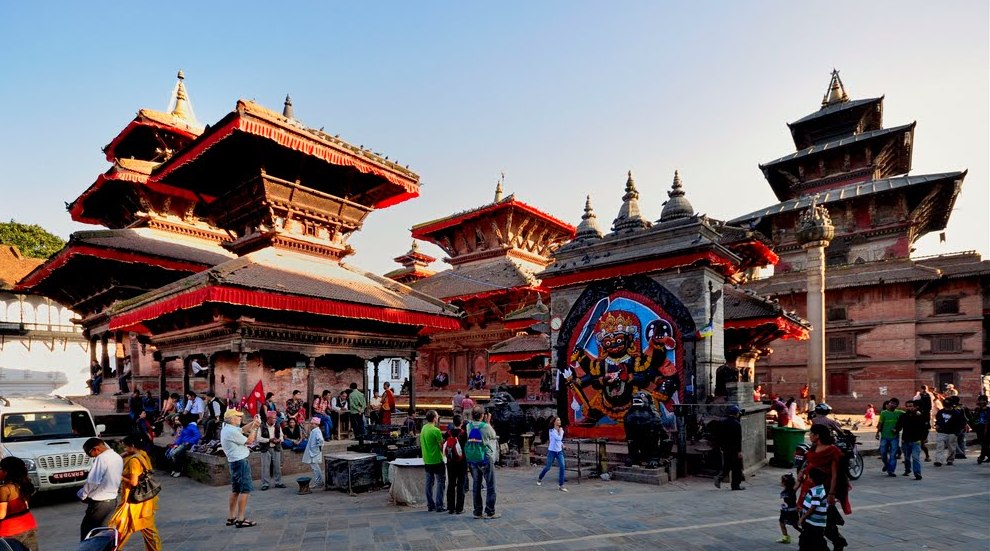 Kathmandu Durbar Square
Our destination for today will be Maccha Khola, which we will begin from Kathmandu via bus. After about 9 hours by bus, we will begin our trek. After crossing a bridge, we will trek through beautiful Sal forests, then climb onto a ridge above huge rapids on the Budhi Gandaki to reach Khursane, upon which the rocky trail weaves its way up and down past two tropical waterfalls on a steep, rocky trail clinging to the side of a cliff.
The path eventually makes its way down and past a few rice terraces, then up and around to the Gurung village of Labubesi. We will further climb behind a rocky outcrop, where the valley opens up and the Budhi Gandaki meanders among wide gravel bars. After dropping to the sandy riverbed, we will walk along rounded stones before climbing over a side ridge, from where we will head down again to the river and cross another suspension bridge to reach Maccha Khola.
Kathmandu Durbar Square
Our destination for today will be Maccha Khola, which we will begin from Kathmandu via bus. After about 9 hours by bus, we will begin our trek. After crossing a bridge, we will trek through beautiful Sal forests, then climb onto a ridge above huge rapids on the Budhi Gandaki to reach Khursane, upon which the rocky trail weaves its way up and down past two tropical waterfalls on a steep, rocky trail clinging to the side of a cliff.
The path eventually makes its way down and past a few rice terraces, then up and around to the Gurung village of Labubesi. We will further climb behind a rocky outcrop, where the valley opens up and the Budhi Gandaki meanders among wide gravel bars. After dropping to the sandy riverbed, we will walk along rounded stones before climbing over a side ridge, from where we will head down again to the river and cross another suspension bridge to reach Maccha Khola. 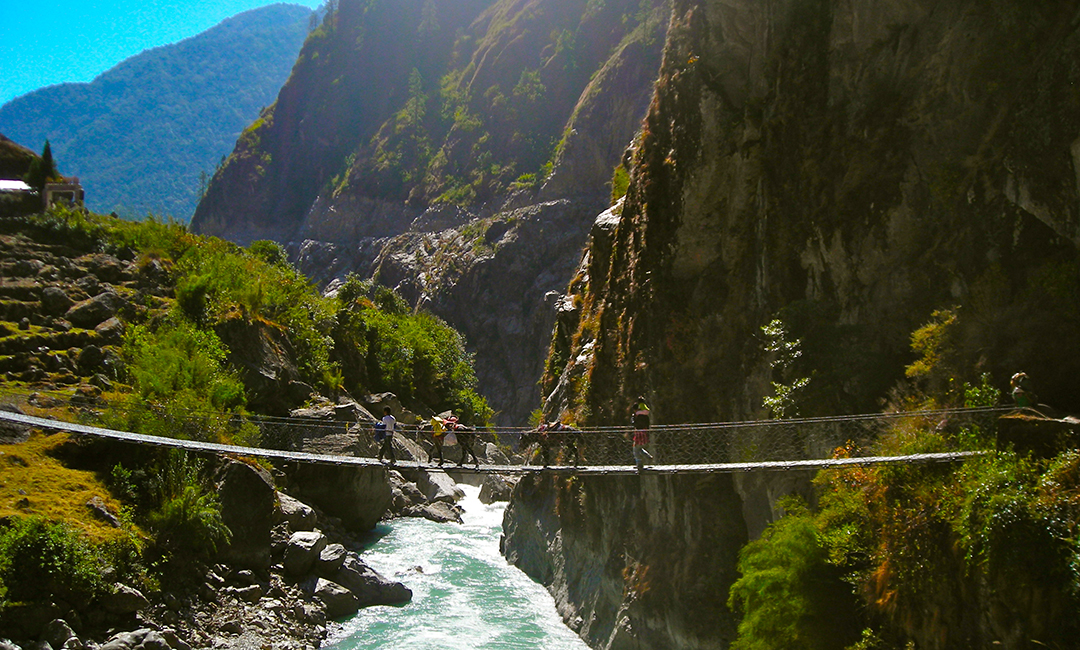 Jagat
The following day, we will start our trek by walking across a forest trail by the Budhi Gandaki River, eventually reaching Khorlabesi. Khorlabesi is a Gurung village where you will get to witness the wonderful Gurung culture. After a few more ascends and descends, we will come across the hotsprings of Tatopani. If you want to feel rejuvenated, you can take a warm shower here.
After a short break, we will climb over another ridge, then cross the Budhi Gandaki on a suspension bridge. At this juncture, we will climb on a wide, well-crafted staircase, then across a landslide and over a ridge to Doban. Upon crossing a suspension bridge over the Yaru Khola, we will come across stone stairs which drops to the river following more stone stairs climb, eventually to reach Tharo Bharyang. Crossing the west bank of the Budhi Gandaki, we will climb over a ridge, trek along the river and then climb towards the village of Jagat.
Note: You will verify your trekking permits at a check post in Jagat.
Jagat
The following day, we will start our trek by walking across a forest trail by the Budhi Gandaki River, eventually reaching Khorlabesi. Khorlabesi is a Gurung village where you will get to witness the wonderful Gurung culture. After a few more ascends and descends, we will come across the hotsprings of Tatopani. If you want to feel rejuvenated, you can take a warm shower here.
After a short break, we will climb over another ridge, then cross the Budhi Gandaki on a suspension bridge. At this juncture, we will climb on a wide, well-crafted staircase, then across a landslide and over a ridge to Doban. Upon crossing a suspension bridge over the Yaru Khola, we will come across stone stairs which drops to the river following more stone stairs climb, eventually to reach Tharo Bharyang. Crossing the west bank of the Budhi Gandaki, we will climb over a ridge, trek along the river and then climb towards the village of Jagat.
Note: You will verify your trekking permits at a check post in Jagat. 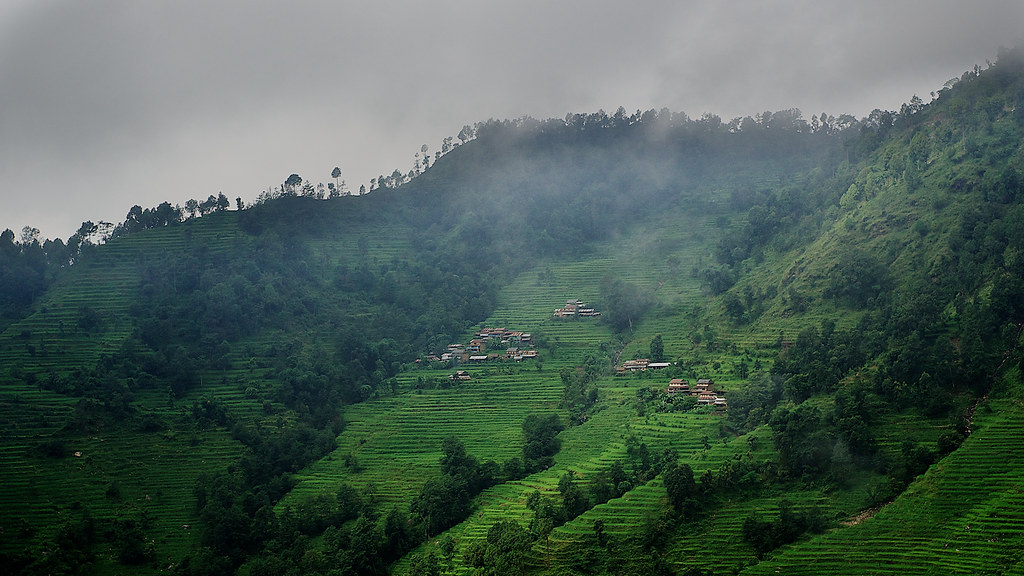 Deng
Today’s trek begins by climbing over a rocky ridge to Salleri, which descends back to Sirdibas. The valley widens a bit as the trail continues up to Ghatta Khola. We will continue further upstream to a long suspension bridge in Philim, a large Gurung village. Upon reaching Philim, we will be greeted with a lot of flags and gumbas of the Buddhist religion.
After, the trail turns north just above the lowest house in the village and stays fairly level as it crosses millet fields to Ekle Bhatti. The route now enters a steep, uninhabited gorge. At this point, we will descend to the grassy land slopes across the Budhi Gandaki, then trek along the west bank for a while. After a brief walk along the trails of the Budhi Gandaki, the valley widens, and we will pass through bamboo forests to the Deng Khola. Upon crossing the river, we will reach the tiny village of Deng.
Deng
Today’s trek begins by climbing over a rocky ridge to Salleri, which descends back to Sirdibas. The valley widens a bit as the trail continues up to Ghatta Khola. We will continue further upstream to a long suspension bridge in Philim, a large Gurung village. Upon reaching Philim, we will be greeted with a lot of flags and gumbas of the Buddhist religion.
After, the trail turns north just above the lowest house in the village and stays fairly level as it crosses millet fields to Ekle Bhatti. The route now enters a steep, uninhabited gorge. At this point, we will descend to the grassy land slopes across the Budhi Gandaki, then trek along the west bank for a while. After a brief walk along the trails of the Budhi Gandaki, the valley widens, and we will pass through bamboo forests to the Deng Khola. Upon crossing the river, we will reach the tiny village of Deng. 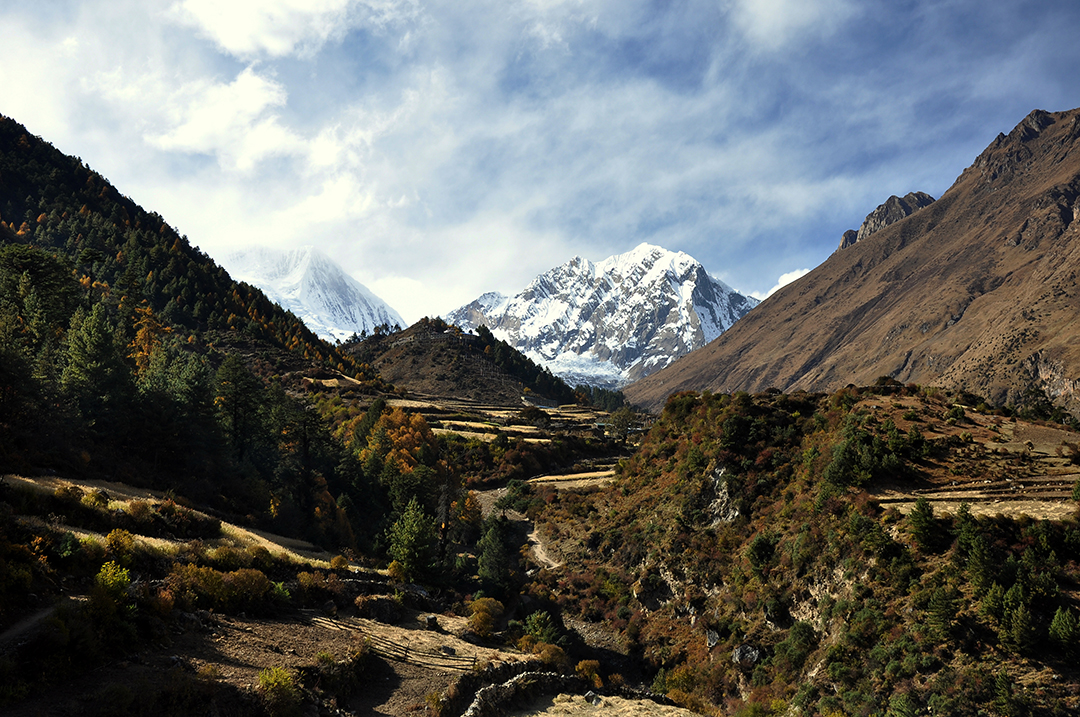 Namrung
After a hearty breakfast in Deng, we will start out day with a brief walk beyond Deng. After crossing the Budhi Gandaki, we will climb to Rana (1,910m). Make sure to take a look around to find some monkeys in this area. The trail continues on to from Bihi, from where we head west up the Budhi Gandaki valley. The trail passes through lush forests and "manis", turning towards a corner that contours to Ghap. Makre sure to follow your guide's instructions around this area as it is prone to landslides.
Even though there is an alternative route, we take the route through Prok village. Prok village has a viewpoint for a beautiful sight of Siringi Himal where you can take a short rest. We will then again cross the Budi Gandaki River. Today, we will cross the Budi Gandaki several times and come across several gompas en route.
The uneven trail then follows the river upstream through a dense forest. After crossing the river at an impressive spot where it thunders down to a narrow gorge, the forest becomes less dense, and the trail is fine again. The pleasant walk continues and after a last steep climb, you will reach Namrung. Namrung is home to the Nubri people, who are Tibetan-Nepalese, and their lifestyle shows a great harmony between the two cultures.
Namrung
After a hearty breakfast in Deng, we will start out day with a brief walk beyond Deng. After crossing the Budhi Gandaki, we will climb to Rana (1,910m). Make sure to take a look around to find some monkeys in this area. The trail continues on to from Bihi, from where we head west up the Budhi Gandaki valley. The trail passes through lush forests and "manis", turning towards a corner that contours to Ghap. Makre sure to follow your guide's instructions around this area as it is prone to landslides.
Even though there is an alternative route, we take the route through Prok village. Prok village has a viewpoint for a beautiful sight of Siringi Himal where you can take a short rest. We will then again cross the Budi Gandaki River. Today, we will cross the Budi Gandaki several times and come across several gompas en route.
The uneven trail then follows the river upstream through a dense forest. After crossing the river at an impressive spot where it thunders down to a narrow gorge, the forest becomes less dense, and the trail is fine again. The pleasant walk continues and after a last steep climb, you will reach Namrung. Namrung is home to the Nubri people, who are Tibetan-Nepalese, and their lifestyle shows a great harmony between the two cultures. 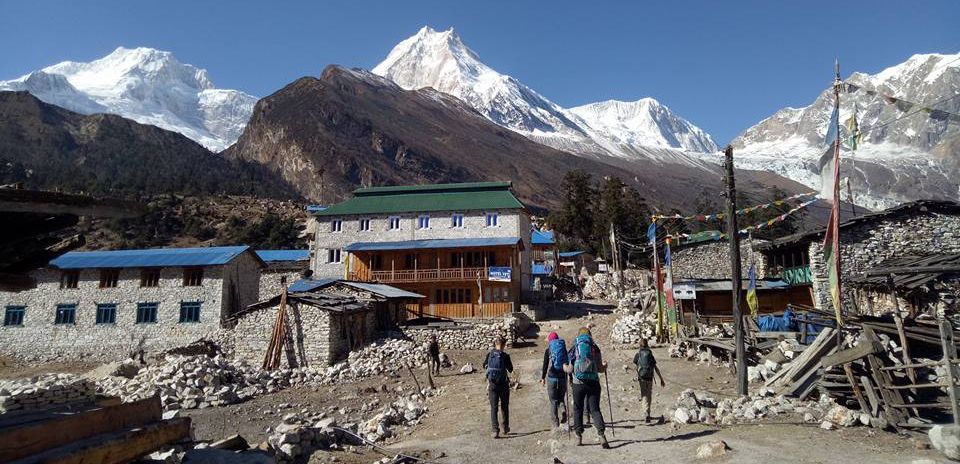 Samagaon
Our day today starts from Namrung, which is a great viewpoint for Mt. Siring and Mt. Ganesh. You can also see Mt. Himal Chuli in the south from there. After a steady climb and passing through green forests, we will reach Lihi, a fine village with many chortens and barley terraces. The trail drops and crosses the side valley of Mt. Simnang, with Mt. Ganesh close by.
We will walk further and pass through Sho, Lho and Shyala villages before reaching Sama Village. In the villages, you will notice people with traditional Tibetan attires. In Lho village, you can enjoy extraordinary views of Mt. Manaslu and also explore the famous Ribung Gompa. In Shyala village. you will be surrounded by high mountains like Mt. Himal Chuli and Peak 29 (Ngadi Chuli) to the left, Manaslu and large glaciers straight ahead, and other snow summits to the right. Today’s journey ends in Samagaon, where we will spend the night.
Note: You will be gaining a steady altitude today (2630m - 3530m) so make sure to walk at a slow pace and tell your guide if you are not feeling well.Samagaon: Arriving in Samagaon, you'll reach a picturesque village situated against the backdrop of towering mountains. This village is a hub for trekkers and serves as a base for exploring higher altitudes, including Manaslu Base Camp.
Samagaon
Our day today starts from Namrung, which is a great viewpoint for Mt. Siring and Mt. Ganesh. You can also see Mt. Himal Chuli in the south from there. After a steady climb and passing through green forests, we will reach Lihi, a fine village with many chortens and barley terraces. The trail drops and crosses the side valley of Mt. Simnang, with Mt. Ganesh close by.
We will walk further and pass through Sho, Lho and Shyala villages before reaching Sama Village. In the villages, you will notice people with traditional Tibetan attires. In Lho village, you can enjoy extraordinary views of Mt. Manaslu and also explore the famous Ribung Gompa. In Shyala village. you will be surrounded by high mountains like Mt. Himal Chuli and Peak 29 (Ngadi Chuli) to the left, Manaslu and large glaciers straight ahead, and other snow summits to the right. Today’s journey ends in Samagaon, where we will spend the night.
Note: You will be gaining a steady altitude today (2630m - 3530m) so make sure to walk at a slow pace and tell your guide if you are not feeling well.Samagaon: Arriving in Samagaon, you'll reach a picturesque village situated against the backdrop of towering mountains. This village is a hub for trekkers and serves as a base for exploring higher altitudes, including Manaslu Base Camp. 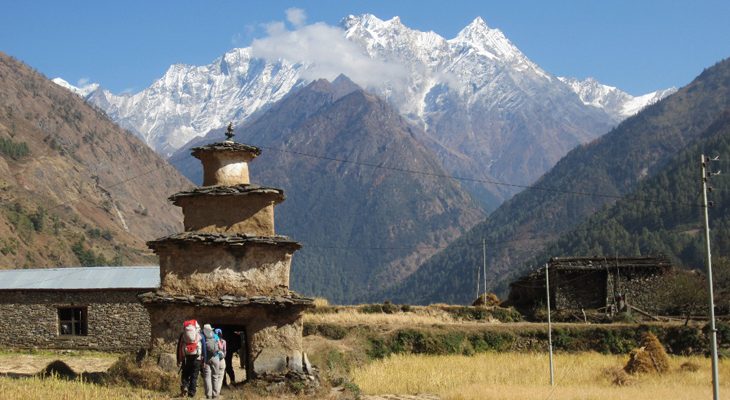 Pungyen Gompa
Today, we will spend the day at Samagaon both for rest and acclimatization. In Samagaon, you will get acquainted with the rich Sherpa culture, and witness the sight of thousands of mani stones with Buddhist texts and pictures and Sherpa women clad in traditional clothes and ornaments. On a little hill near the Sama village is an old Gompa (Pungyen Gompa), a monastery with breathtaking views of Mt. Manaslu. The gompa is named after Manaslu (Pungyen means bracelet, a good description of the two peaks).
Pungyen Gompa
Today, we will spend the day at Samagaon both for rest and acclimatization. In Samagaon, you will get acquainted with the rich Sherpa culture, and witness the sight of thousands of mani stones with Buddhist texts and pictures and Sherpa women clad in traditional clothes and ornaments. On a little hill near the Sama village is an old Gompa (Pungyen Gompa), a monastery with breathtaking views of Mt. Manaslu. The gompa is named after Manaslu (Pungyen means bracelet, a good description of the two peaks). 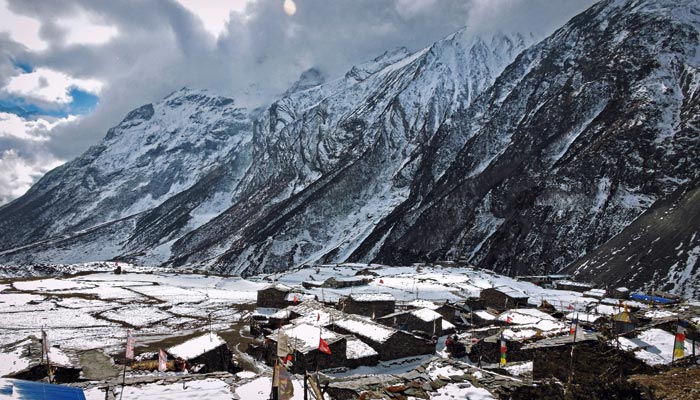 Samdo
Our destination for today is Samdo, a small village along the trail. We start by descending to the Budhi Gandaki River north and follow it to a bridge over a side stream. The trail that you will see to the left leads to the Manaslu Base camp. The Larkya la Trail passes several mani walls as the valley begins to widen. It is an easy trail on a shelf where you will see junipers and birch forests of Kermo Kharka. We will drop off the shelf, cross the Budhi Gandaki on a wooden bridge and climb steeply onto a promontory between two forks of the river. We will then see a stone arch where you can view a large white Kani. Finally passing through the Kani, we will find Samdo.
Samdo
Our destination for today is Samdo, a small village along the trail. We start by descending to the Budhi Gandaki River north and follow it to a bridge over a side stream. The trail that you will see to the left leads to the Manaslu Base camp. The Larkya la Trail passes several mani walls as the valley begins to widen. It is an easy trail on a shelf where you will see junipers and birch forests of Kermo Kharka. We will drop off the shelf, cross the Budhi Gandaki on a wooden bridge and climb steeply onto a promontory between two forks of the river. We will then see a stone arch where you can view a large white Kani. Finally passing through the Kani, we will find Samdo. 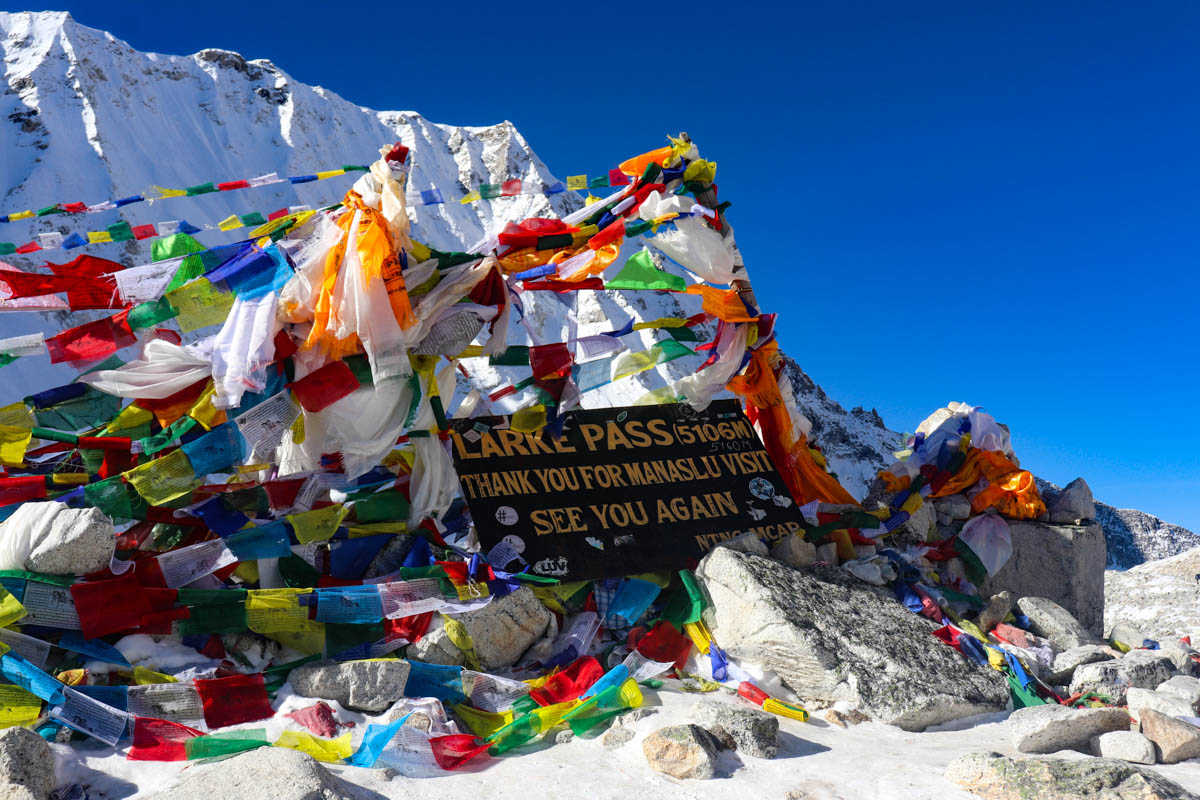 Larkya La
Today, we will reach the highest point of the trek (5,160m) so make sure to pace yourself and follow your guide. We will begin your day early from Dharamsala, where after a short climb, youwe will reach a valley on the north side of the Larkya Glaciers. From here, you can enjoy great views of Cho Danda and Larkya Peak. We will then walk across moraines of the glacier, making a gradual ascent which becomes steeper as you go in the last section of the pass. From the pass, you can witness outstanding views of Mt. Himlung, Cheo Himal, Kangguru and the huge Annapurna II.
We will have walked almost 7-8 hours by now, but the day is still not over! After spending some time at the pass, we will descend down to Bimtang walking through low pastures in the evening. The evening mist coming in from the mountains, and with Mt. Manaslu looming close by, the descent is bound to be an overwhelming experience.
Larkya La
Today, we will reach the highest point of the trek (5,160m) so make sure to pace yourself and follow your guide. We will begin your day early from Dharamsala, where after a short climb, youwe will reach a valley on the north side of the Larkya Glaciers. From here, you can enjoy great views of Cho Danda and Larkya Peak. We will then walk across moraines of the glacier, making a gradual ascent which becomes steeper as you go in the last section of the pass. From the pass, you can witness outstanding views of Mt. Himlung, Cheo Himal, Kangguru and the huge Annapurna II.
We will have walked almost 7-8 hours by now, but the day is still not over! After spending some time at the pass, we will descend down to Bimtang walking through low pastures in the evening. The evening mist coming in from the mountains, and with Mt. Manaslu looming close by, the descent is bound to be an overwhelming experience. 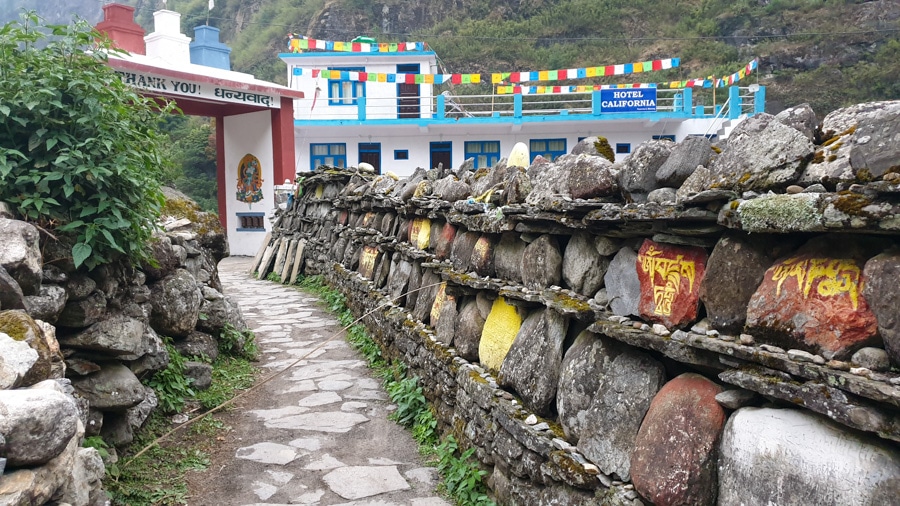 Dharapani
Today will mark the final day of us being in the Manaslu region so make sure to look at Mt. Manaslu plenty! We will start you day with views of Manaslu to your left and the Annapurna ranges to your right, descending from Bhimthang through yak pastures. We will then see signs of Dudh Khola's headwaters trickling down the slope, from where we will cross a bridge.
The bridge leads to a path that gradually leaves behind the alpine climate and takes you down through familiar rhododendron forests to a narrow valley of terraced fields and patchwork crops. We will then reach the small and picturesque village of Tilje, from where you will make your way uphill to Dharapani, a major trekking confluence in the region and the modern starting point for trekkers heading out on the Annapurna Circuit to reach the Thorang La pass. We will stay the night at Dharapani.
Dharapani
Today will mark the final day of us being in the Manaslu region so make sure to look at Mt. Manaslu plenty! We will start you day with views of Manaslu to your left and the Annapurna ranges to your right, descending from Bhimthang through yak pastures. We will then see signs of Dudh Khola's headwaters trickling down the slope, from where we will cross a bridge.
The bridge leads to a path that gradually leaves behind the alpine climate and takes you down through familiar rhododendron forests to a narrow valley of terraced fields and patchwork crops. We will then reach the small and picturesque village of Tilje, from where you will make your way uphill to Dharapani, a major trekking confluence in the region and the modern starting point for trekkers heading out on the Annapurna Circuit to reach the Thorang La pass. We will stay the night at Dharapani.
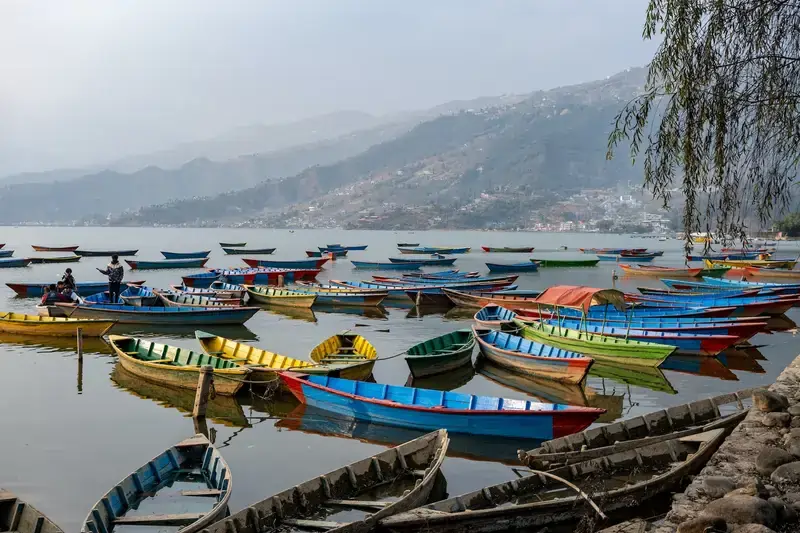 Pokhara
Today, we will descend down from Dharapani via a vehicle. We can go to Pokhara too as today will kind of be like a leisure day where you can catch up with some last-minute shopping. The drive to Kathmandu takes 6-7 hours. After reaching Kathmandu, we will transfer you to your hotel, where the Magnificient Manaslu Trek will be complete.
Pokhara
Today, we will descend down from Dharapani via a vehicle. We can go to Pokhara too as today will kind of be like a leisure day where you can catch up with some last-minute shopping. The drive to Kathmandu takes 6-7 hours. After reaching Kathmandu, we will transfer you to your hotel, where the Magnificient Manaslu Trek will be complete. Services
Services Included in the Package
- Pickup from airport on arrival day
- Local Transport to Trekking starting point
- A professional guide
- Accommodation
- Daily breakfast
- A trek map
- First aid kit and Emergency evacuation arrangements
- Government taxes
- Service charges and fees
- Necessary Conservation permits
- Equipment and Insurance for guide
- Accommodation, meals & daily allowance for guide
- Necessary transport by Local Jeep/Bus
Services Excluded in the Package
- Lunch & Dinner during trip
- All drinks (Hot/cold/bottled) during trip
- Travel/Medical Insurance
- Emergency evacuation fee
- Hot Shower/Electronic device recharging cost
- Other miscellaneous services not included
More Info
Food and Accommodation during the trek
The Manaslu trek is a relatively difficult trek so food and accommodation services might not be as luxurious as in other trekking destinations like Annapurna or Mardi. But you can expect to be staying in teahouses/lodges, either in twin rooms or dorms. Accommodations provide basic amenities like proper beds and bathrooms. Hot showers are available but generally require some fee to be used.
Food available during the trek include a variety of local indigenous Gurung/Tibetan cuisines, garlic soup, tea and other beverages. Note that because a lot of the food is brought up to these higher altitudes from cities down below, the prices might be higher than what you would expect.
Permits and Documentation
- Passport: With necessary visas and permits.
- TIMS Card: Trekkers’ Information Management System card (We will manage this for you)
- Manaslu Conservation Area Permit: Attainable in Kathmandu or at the trek entry point
- Insurance: Travel insurance covering trekking and high-altitude rescue(Recommended)
Altitude and Acclimatization
Since we will be reaching high altitudes during the trek, acclimatization will be crucial to avoid potential altitude sickness. We have designed our itinerary hence with gradual altitude gains and included rest days for acclimatization. Further, if you think you have contracted potential symptoms for altitude sickness, make sure to relay the information to your guide.
Pickup from airport during arrival
Our team offers the service of picking you up from the international airport in Kathmandu when you arrive in Nepal after you have booked your trip with us. Our team will contact you via email, phone or text after your booking, and after sharing details, our team will pick you up at the airport and transfer you to your hotel upon arrival.
Trek Site Map
FAQs
The Manaslu Trek is considered a strenuous trek and is suitable for experienced trekkers. The trail involves steep ascents and descents, challenging terrain, and high-altitude passes. Adequate physical fitness, prior trekking experience, and acclimatization are essential for a successful and safe trek. So, if you are an amateur in trekking, we recommend other trekking destinations first like the ABC trek or the Mardi Himal Trek.
Yes, a special trekking permit called the “Restricted Area Permit” is required to trek in the Manaslu region. Additionally, you need to be accompanied by a registered guide. The permit aims to control the number of visitors and preserve the cultural and natural heritage of the area. It’s advisable to arrange the necessary permits through a local trekking agency or a guide.
The best time to trek in the Manaslu region is during the spring (March to May) and autumn (September to November) seasons. These months offer stable weather conditions, clear skies, and favorable temperatures for trekking. However, it’s important to note that winter (December to February) brings heavy snowfall, and monsoon season (June to August) brings rain and increased risk of landslides, making trekking more challenging.
Yes, tea houses (basic guesthouses) are available along the Manaslu Trek route. However, the infrastructure is not as developed as in other popular trekking regions of Nepal. The tea houses offer basic accommodation, meals, and facilities such as shared bathrooms. It’s recommended to carry some cash as credit card facilities may be limited or unavailable in these remote areas.
Yes, hiring a registered guide is mandatory for the Manaslu Trek. The trek falls under the restricted area, and the presence of a guide is necessary for your safety and to ensure compliance with local regulations. A guide will also provide valuable insights, navigation assistance, and help with accommodation and permits, enhancing your overall trekking experience.
The Manaslu trek involves long hours of walking and ascending to high altitudes, so we recommend you to be somewhat fit. Make sure to work on your cardiovascular exercises, strength training, and stamina-building activities. We recommend you go hiking, running, and stair climbing before the trek to prepare for the upcoming terrain.
Most of the day lunch break will be made along the trekking trails. Generally 12:30 pm to 13:00pm is good time for lunch. Our guide will stopping in a tea house ( The Best from his experience). You can order Lunch from the menu provided by Tea house. You can have local & western dishes). For Dinner you can order in same Tea houses where you staying.
